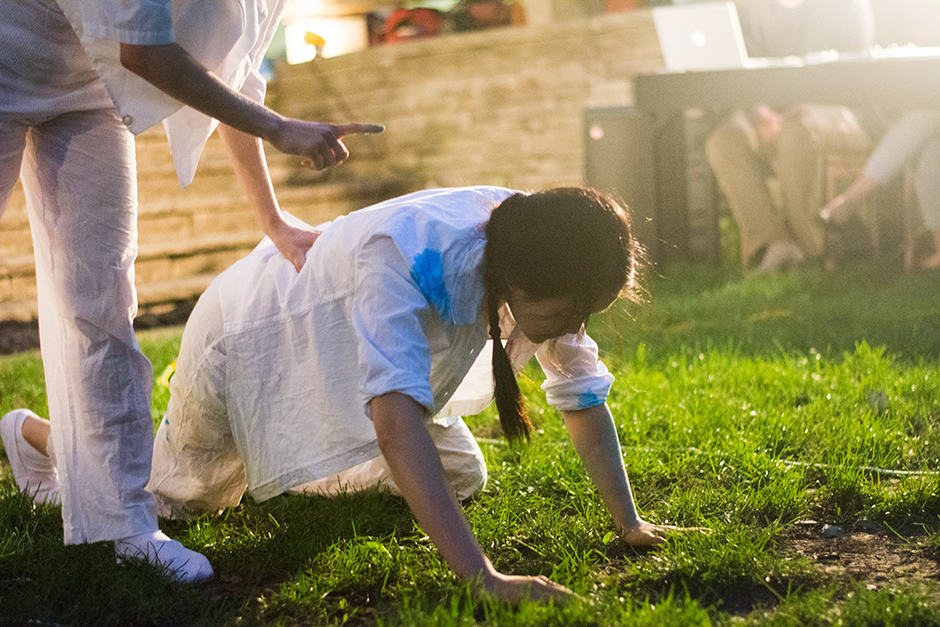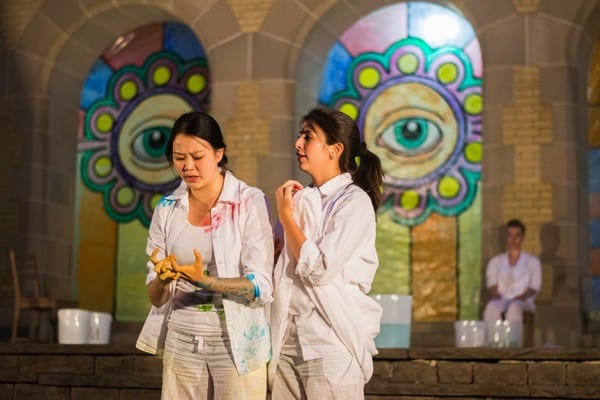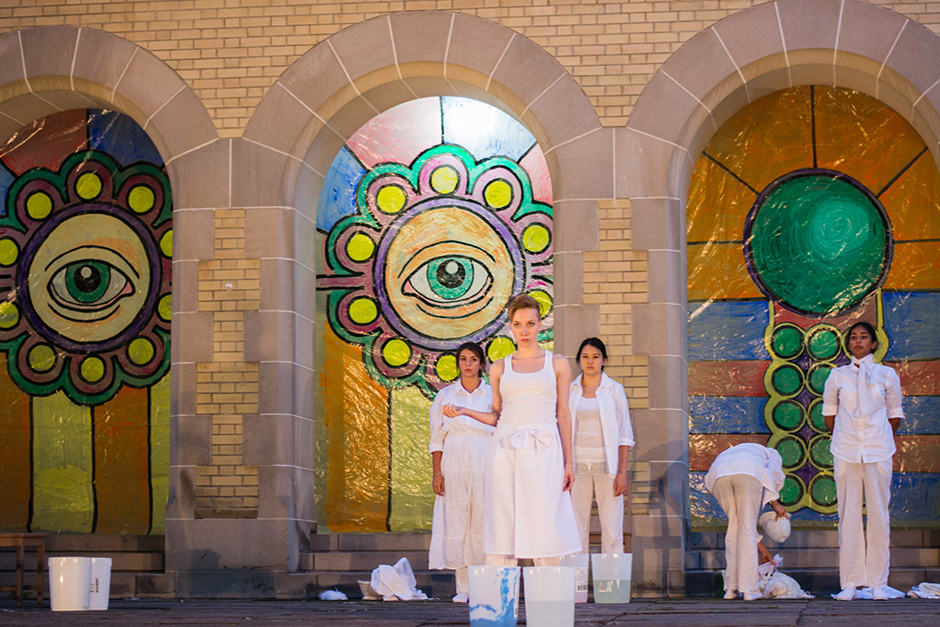Learning how to act is much more than imitation — it is an all-around effort requiring hard work. The majority of actors spend many years studying and training. One of the most overlooked aspects when it comes to acting is the fitness and physical endurance required.
Fitness and physical activity play a huge role in putting on a good performance, especially when it comes to fight choreography.
“Good warm-ups are essential for this to work [and actors have a lot of fun warm-ups], but knowing your fellow cast-mates and really getting on the same wavelength as them before even entering the stage is also a necessity,” says Arun Radhakrishnan, co-president of the Trinity College Dramatic Society (TCDS), on the topic of fight coreography.
Radhakrishnan has experience with fight choreography from acting in plays such as Richard III and Murder in the Cathedral.
Travis DeWolf is a fourth-year student currently taking the course DRM403, Performance III. Last week, the class performed Katie of Heilbronn: An Obsession. The show was directed by Banuta Rubess, the instructor of the course.
The play is very physically demanding. “Almost all of the actors are playing anywhere from two to five different characters across a show which, when you include preshow and intermission, runs about two and a half hours,” says DeWolf.
“This means that not only do actors have to be very aware of their distinct character physicalities on stage, but also have little ‘downtime’ backstage between scenes due to fairly extensive costume and makeup changes,” she adds.
“I think there are two vital components to keeping ourselves as healthy and ready to work as possible. The first of which is having a thorough, though not overly physically strenuous, warm up of the body, voice, and mind through stretching, light cardio, massage, focus exercises, and a vocal warm up. This addresses the majority of the physical needs for the show and prevents muscle/vocal strain within each performance and for subsequent performances,” DeWolf adds.
All drama students at U of T are required to take the Introduction to Movement for the Actor class (DRM211). Movement classes are fundamental to becoming a great actor.
If actors misuse their body to a certain extent, the damage will not be easily repaired, if repaired at all. A poorly done stage fall resulting in a bruised knee is an example of a potentially “career shortening move.” It is important for aspiring actors to begin movement training as early in their career as possible.
“An actor has three tools at his or her disposal: the mind, the voice, and the body. Should any one of those elements be neglected or underused, the actor’s success at any project will be diminished proportionally. Therefore, it is imperative that all actors begin movement training as soon as they enter any acting program, and that they continue to incorporate the skills and knowledge learned in those courses long after graduation,” says DeWolf.
In a director’s shoes, it is important to recognize that each actor, and indeed each person in general, has a different vocabulary about movement and their bodies.




